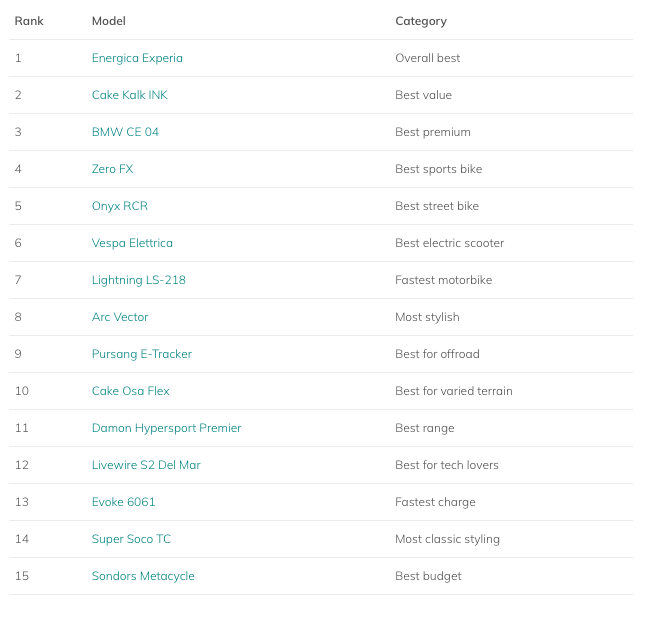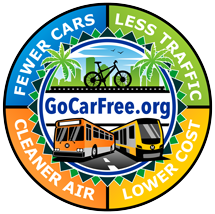
Lesson 12
Two Wheeling It: Motorcycles and Scooters
“I don’t know how to explain to you how boring driving a car is compared to riding a motorcycle. Riding a motorcycle is a lot of fun. If you want to have a fun time on the way to and from work, get yourself a motorcycle.”
– Jonathon, Car free motorcycle commuter and Influencer In his YouTube video, “Pros and Cons of Motorcycle Commuting” ThisLifeRiding YouTube channel
When researching this course, I put out a request for motorcycle commuters to participate in an interview about biking to work. Within three days I had received hundreds of email messages.
That tells me there are an awful lot of people out there who are passionate about riding motorcycles for daily transportation. As you read some of the success stories in this lesson you’ll begin to understand why.
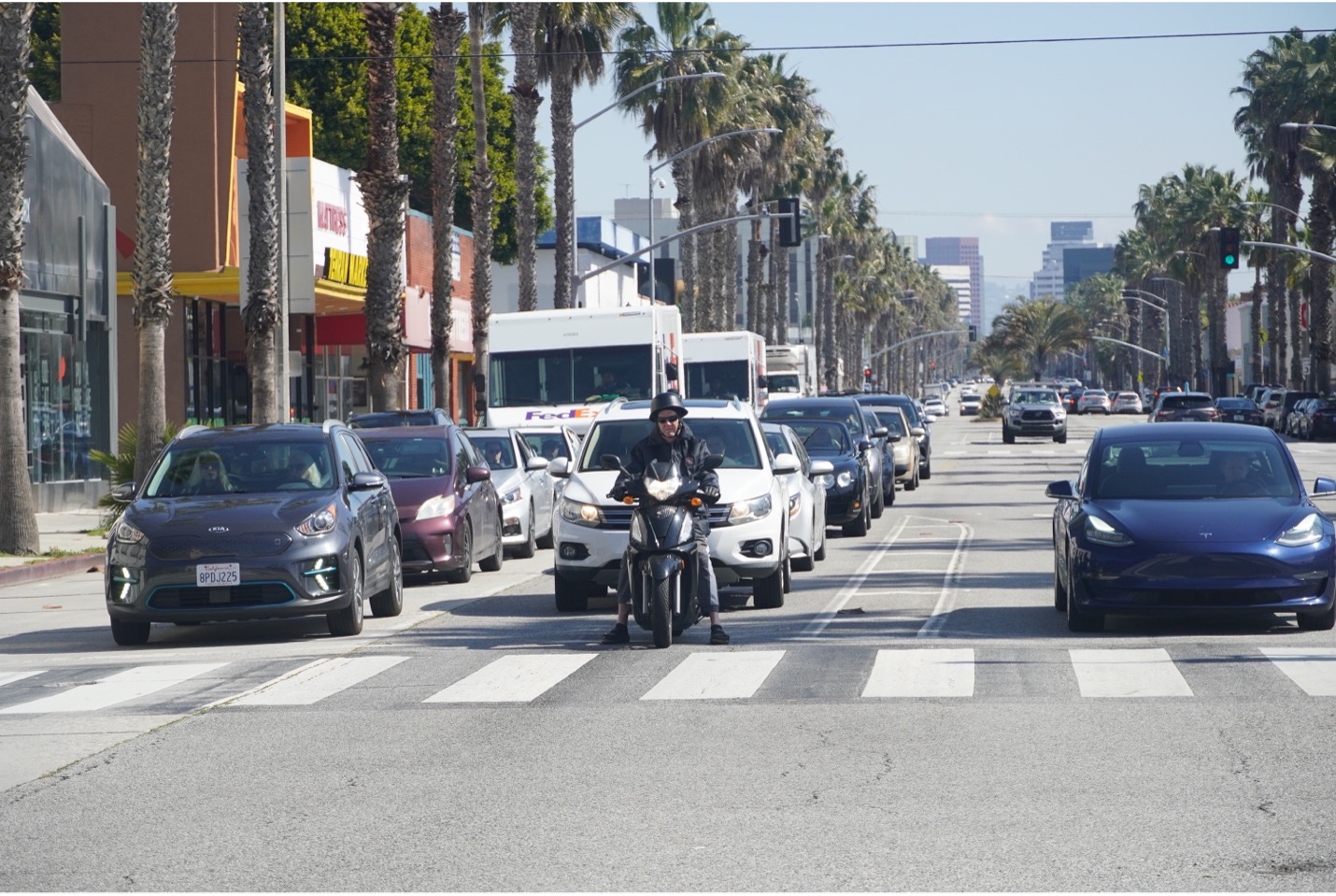
Car Free Success Story:
Commuting by motorcycle is a fast and efficient means of private transportation. Scooters are even more efficient in high-density urban environments. Unfortunately, in this country motorcycles are typically seen as luxury items or lifestyle accessories rather than as a legitimate means of transportation. If motorcycles and motorbikes were more mainstream, as they are in Europe and Asia, we would all have less urban traffic gridlock and commuters would shave significant amounts of time from their daily commute.
Motorcyclists Are a Growing Group
Motorcycle sales have increased every year for the past decade, peaking in 2021 with 550,000 units sold. The surge in popularity is partly due to a better product and wider selection. Today you’ll find a wider variety of styles and designs to choose from than ever before. Including battery powered electric motorcycles of all kinds.
There is a motorcycle made for virtually every skill level and usage pattern. And thanks to computer-aided engineering and advances in metal and plastics technologies, motorcycles are better than ever.
Reliability and power have increased, and so has fuel efficiency. Tremendous strides have also been made in safety features and safety equipment.
“The twentieth century has heard the call of the motorcycle and answered it. Even the automobile has been forced to admit that it has a real peer in its agile little contemporary.”
– Excerpt from “You and the Motorcycle; Excelsior-Henderson” circa 1914
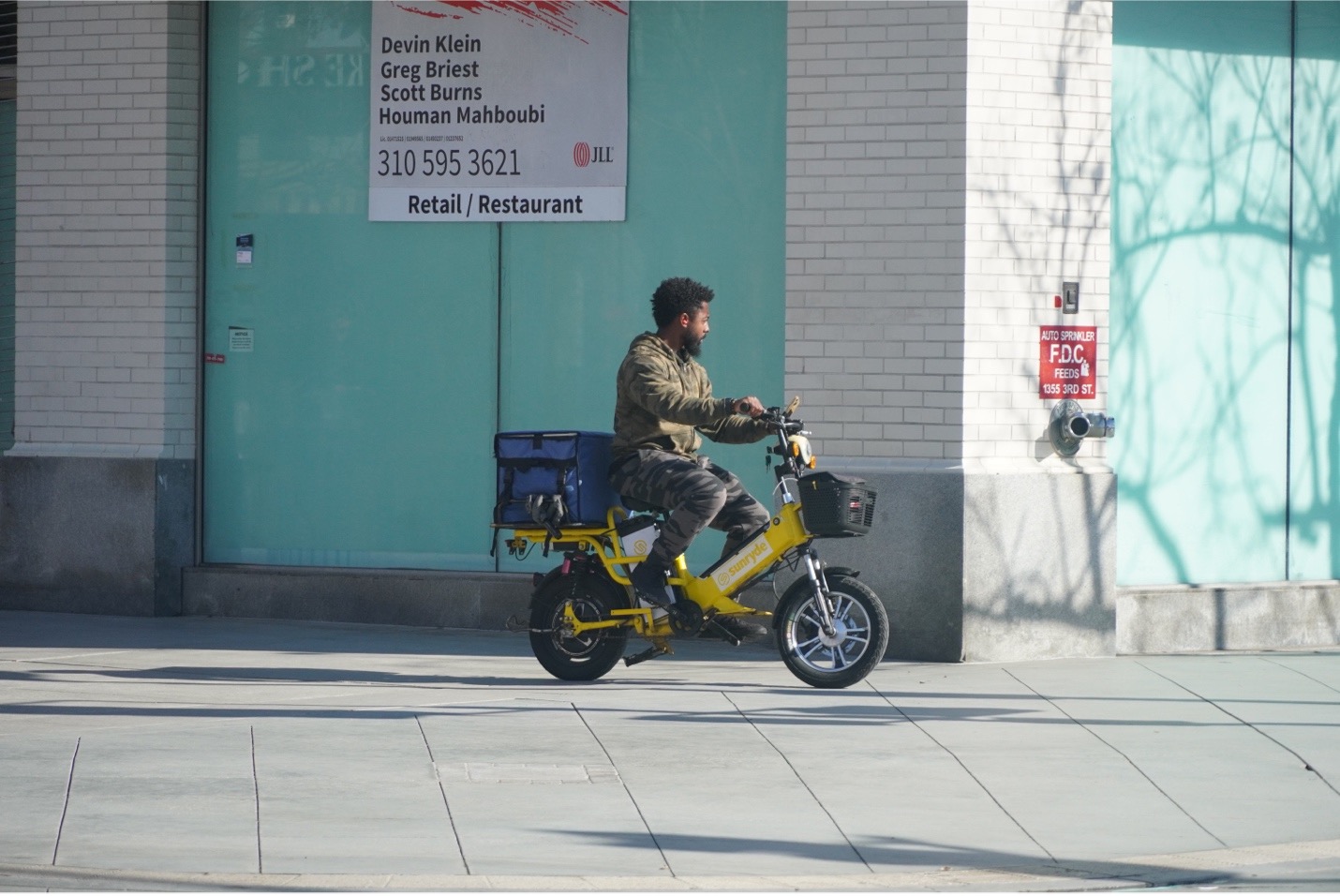
The Benefits of Commuting on Two Wheels
Motorcycles and scooters consume much less fuel than cars. On average, a well maintained motorcycle will achieve fuel economy between 45 and 55 miles per gallon. Some semi-automatic motorcycles are even more fuel efficient and can achieve nearly 90 miles per gallon. But the fuel economy champ is the 50 cc scooter, which can achieve between 100 and 117 mpg – more on this later.
Motorcycles and scooters also take up a smaller amount of space on the road than cars, so they help reduce traffic congestion. And three to five motorcycles or scooters can park in a spot designed for a single car.
Plus, the cost to purchase, own, and operate a motorcycle or scooter is a fraction of what a car costs. You’ll save money on gasoline, tires, insurance, parking, and maintenance, just to name a few. In fact, motorcycle and scooter parking is often free, and usually in the front row.
Another huge benefit is that many states allow motorcycles free access to HOV lanes. This alone can shave a hefty chunk of time off a commute. It’s one of many reasons motorcycles can be a faster way to travel through a city.
A British study found that riding a motorcycle or scooter in London reduced travel time by 40 to 60 percent. Maybe that’s why scooter sales in the U.K. have risen 1,600 percent, according to the Motorcycle Industry Association.
And let’s not forget that riding a motorcycle or scooter is fun, it’s a great conversation starter, and motorcyclists just seem cool. How great would it be to start and end your workday doing something you truly enjoy?
If you want to laugh out loud while comparing and contrasting motorcycles vs. cars, watch this video from YouTuber Yammie Noob. He pretty much covers every reason owning a motorcycle is superior to owning a car.
Car Free Success Story:
The first time I rode my motorcycle to my new job, I got ready to go home by changing into my riding home gear in the office washroom. I walked out in leather chaps, riding boots, motorcycle jacket, and fingerless gloves, and was buckling on my helmet. I found myself face to face with the senior partner of the company. He just blinked at me for a few seconds and then said, “You ride a motorcycle?” I was thinking that maybe at this company it was not appropriate for the senior customer service manager to be a biker, but I said “Yes” anyway. A look of relief came over his face. He exhaled and said, “Thank God. I thought you might be one of the Village People.”
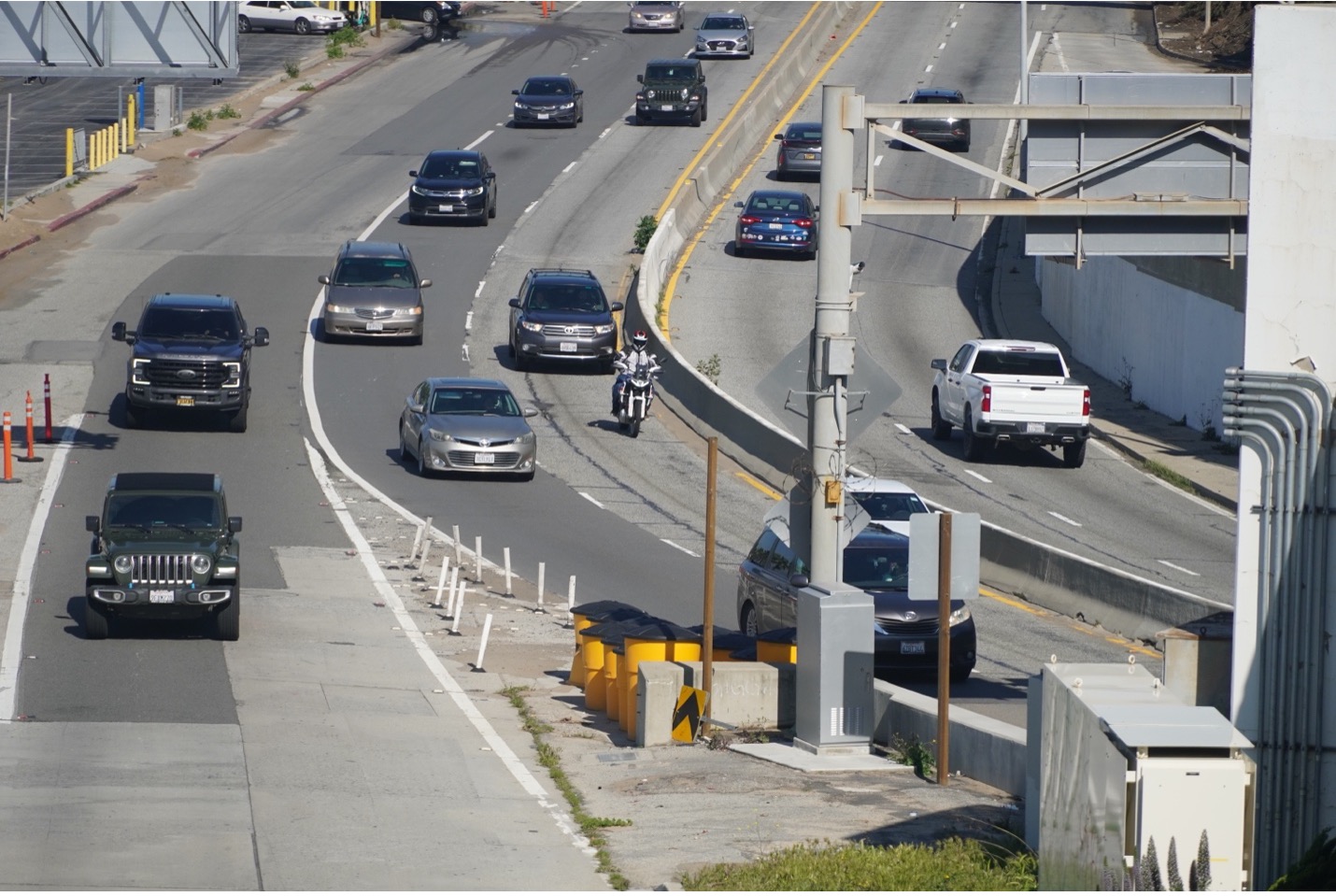
Lane Sharing
Another way motorcyclists get to work faster than people driving cars is by a method variously called filtering, lane sharing, or lane splitting. Where allowed, it means motorcyclists may ride between lanes of traffic gridlock on a multilane highway. Lane sharing is legal in some states, including California.
Some motorcyclists think lane sharing is dangerous; other say it is one of the safest ways to ride. This debate will certainly continue, but for now just know that lane sharing is definitely not a tactic for beginning riders. There are safe lane-sharing methods and unsafe ones, so it may be something to look into once you have a few years of experience, and only if it’s legal in your state.
Car Free Success Story:
When you join the ranks of two-wheeled commuters, you are joining a worldwide family. Most motorcyclists wave when they approach another motorcyclist on the road. The wave is an acknowledgment that we are a different breed from the “cagers” (automobile drivers). The wave is a tip o’ the hat to the fact that we, as motorcyclists, face an entirely different set of challenges out on the road compared to the average driver. Whatever wave you use, make sure you exercise your right to celebrate your membership in an exclusive group.
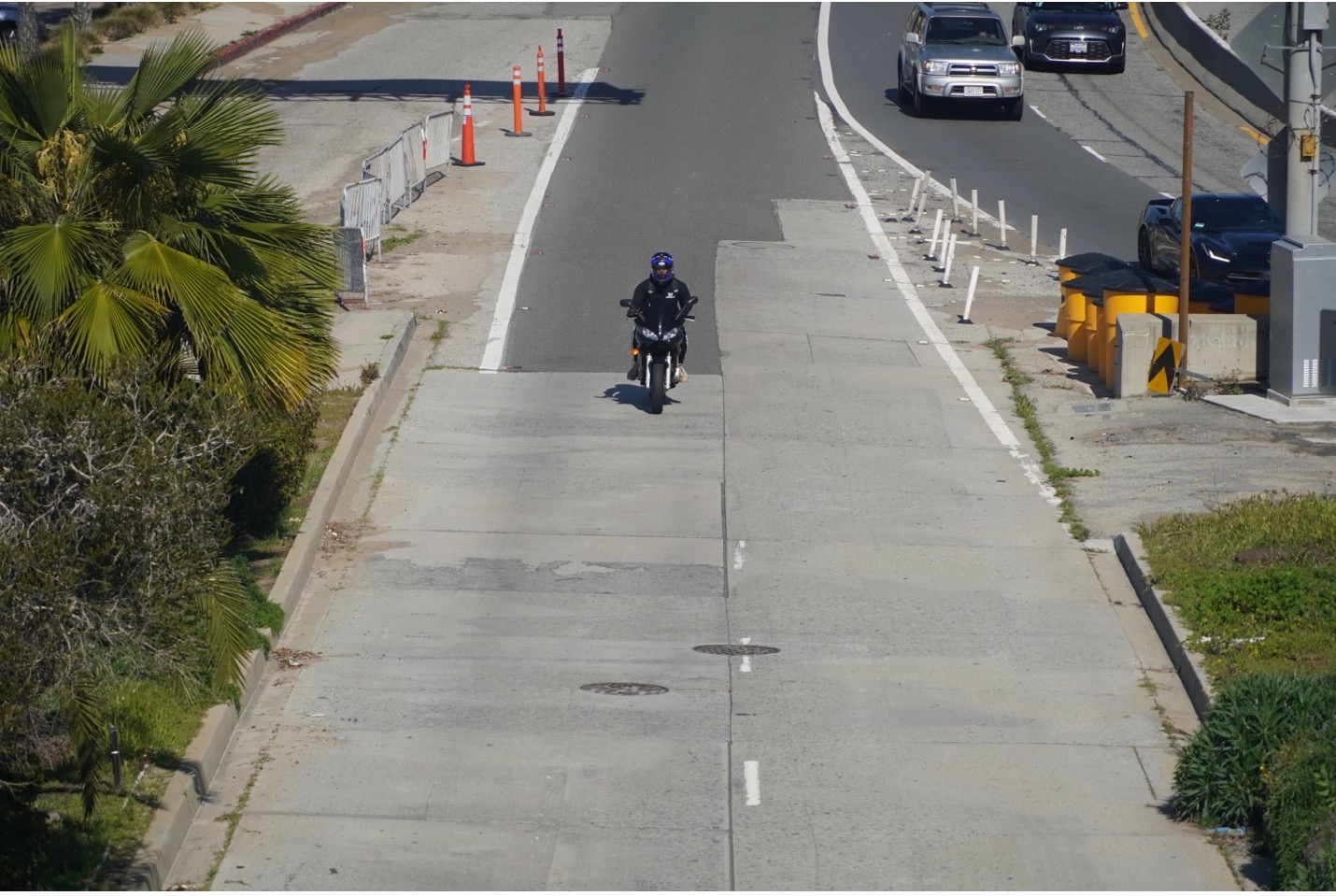
Motorcycle Safety Concerns
Motorcycles have a reputation for being dangerous. And statistically, they are more dangerous than cars. According to a study by the National Highway Transportation Safety Administration, per vehicle mile motorcyclists are 16 times more likely to die in a crash than people who drive cars.
But to get the full story we have to look deeper into the numbers. According to the NHTSA:
- Forty-one percent of all motorcyclists who died were speeding at the time of the crash.
- Almost half of the motorcycle operators who died in single-vehicle crashes were intoxicated.
- Almost one-third of motorcyclists who died in crashes did not have a proper license.
- Almost half of motorcyclists who died in crashes were not wearing a helmet.
- Seventy percent of all crashes occurred on undivided roadways.
- The average motorcycle is ridden only about 1,800 total miles per year.
The lessons from this study are clear: follow common sense, and get proper motorcycle training before you ride. If you maintain a safe speed, obtain the proper motorcycle license, wear a helmet, don’t drink and ride, and ride regularly you can drastically reduce your likelihood of being injured on a motorcycle.
Since most fatalities happen on undivided roadways, keep in mind that you are actually safer commuting to work on an interstate or other divided highway. Experts say daily riding experience is invaluable and that the risk per mile goes down the more often one rides.
Car Free Success Story:
Parking is a bear in San Francisco, thus I haven’t owned a car in years. I hire a cage when I need to, which is more infrequent than I imagined. The cost of renting a car is far below the cost of owning a car (car payments, insurance and parking tickets) and I get a brand new car every time. My motorbike is the perfect vehicle for metropolitan living: fuel efficient, traffic efficient, easy to park, and just plain fun to ride.
Should You Wear a Helmet?
Regardless of the law, which varies from state to state, common sense and safety require that all motorcycle and scooter riders wear a helmet. This goes for every trip on the bike, regardless of distance.
Experienced riders point out that cyclists should also always wear protective clothing such as leather jackets, chaps, or armored riding suits. Avoid riding in flimsy clothing like shorts, T-shirts, and sandals.
“It is said that you will find no motorcycles parked in front of the therapist’s office. That is, unless it is the therapist’s motorcycle.”
– Unknown
Take a Motorcycle Course First
If you think commuting by motorcycle might be for you, the first step is to become a properly licensed rider and take a motorcycle rider’s safety course. Many community colleges and vocational schools offer comprehensive courses that cover everything from buying a bike to rules of the road and safety procedures.
In some states, if you complete a certified motorcycle safety course then you may not have to take the motorcycle driving test at the DMV to get your license. Note that most motorcycle safety courses take about 15 hours.
The good news is you don’t even need your own motorcycle to take the course. The instructor or the school will typically make at least one demonstration model available to students. So in theory, you could take the course to see how you like it before you commit to buying a motorcycle.
How do you find a motorcycle safety course? A national organization called the Motorcycle Safety Foundation sponsors classes around the country, and they also offer eLearning courses so you can start training online.
MSF has an informative website (MSF-USA.org) and a toll-free number (800-446-9227) to call for course information and locations in your area. The automated phone response system works very efficiently: just enter your zip code and you’ll get a listing of course locations in your area.

Car Free Success Story:
I am a lawyer and an investor and I ride my Harley-Davidson Electra Glide everywhere I go. I do not own a car, and have absolutely no desire to acquire one. Riding a bike as your only transportation, especially a Harley, always brings out conversations with total strangers that would never arise if I were arriving in a car. I have used a bike as my sole transportation since 1996. Most people probably consider me to be somewhat of a rebel, or a renegade, and they are right on the money!
Car Free Success Story:
I bought my motorcycle for $900. I paid for it in full, so there is no monthly payment.
- Registration: $100 per year.
- Insurance: $170 per year (basic liability only).
- Gas: approximately $20 per week = $1,040 per year. (My motorcycle commute is fifty miles round trip – twenty-five miles in each direction. This amounts to 12,000 miles per year. That’s a lot for a motorcycle.
- Parking: $0. Even when I go out to lunch in a mall where I used to pay for parking, the attendant allows me to park for free as long as I don’t take up a parking space. I park alongside a curb or a tree.
- Maintenance: $90 per year in oil changes (every 4,000 miles); $400 per year in tires (assuming a change every 5,000 to 7,000 miles); $90 per year in brake pads. Total is approximately $580 per year.
Total annual motorcycle costs = $1,890.
The car we sold was a Honda Civic Hybrid, so it got about the same gas mileage. Our monthly car payment was $380. Registration was about $300 per year. Insurance was about $1,200 per year.
Total annual car costs = approximately $7,700 per year. The motorcycle saves us approximately $5,810 per year.
Scoot to Commute
Scooters differ from motorcycles in several ways. They have smaller engines, usually between 50 and 250 cc’s. They don’t go quite as fast as motorcycles, but they get better gas mileage.
Scooters have automatic transmissions, so there’s no clutch to worry about. Scooters usually have a “step-through” design so you can put your legs directly in front of you while riding.
Scooters weigh less than motorcycles, so they’re easier to handle. For example, pulling a scooter up over a six-inch curb is doable; good luck trying that with a seven-hundred-pound motorcycle.
Because scooters are lighter, it is a good idea to secure a lightweight scooter with a chain and lock to prevent theft. Also note that due to their smaller engines, some jurisdictions may not allow scooters on the freeway. If freeway travel will be part of your commute, a full size motorcycle or a scooter with a larger engine may be necessary.
Car Free Success Story:
I commute to work every day on a Vespa scooter. I save about two grand a year just on gas. Unless I’m traveling with someone other than my girlfriend or transporting things that are too awkward or large for my scooter there is no reason to use a car.
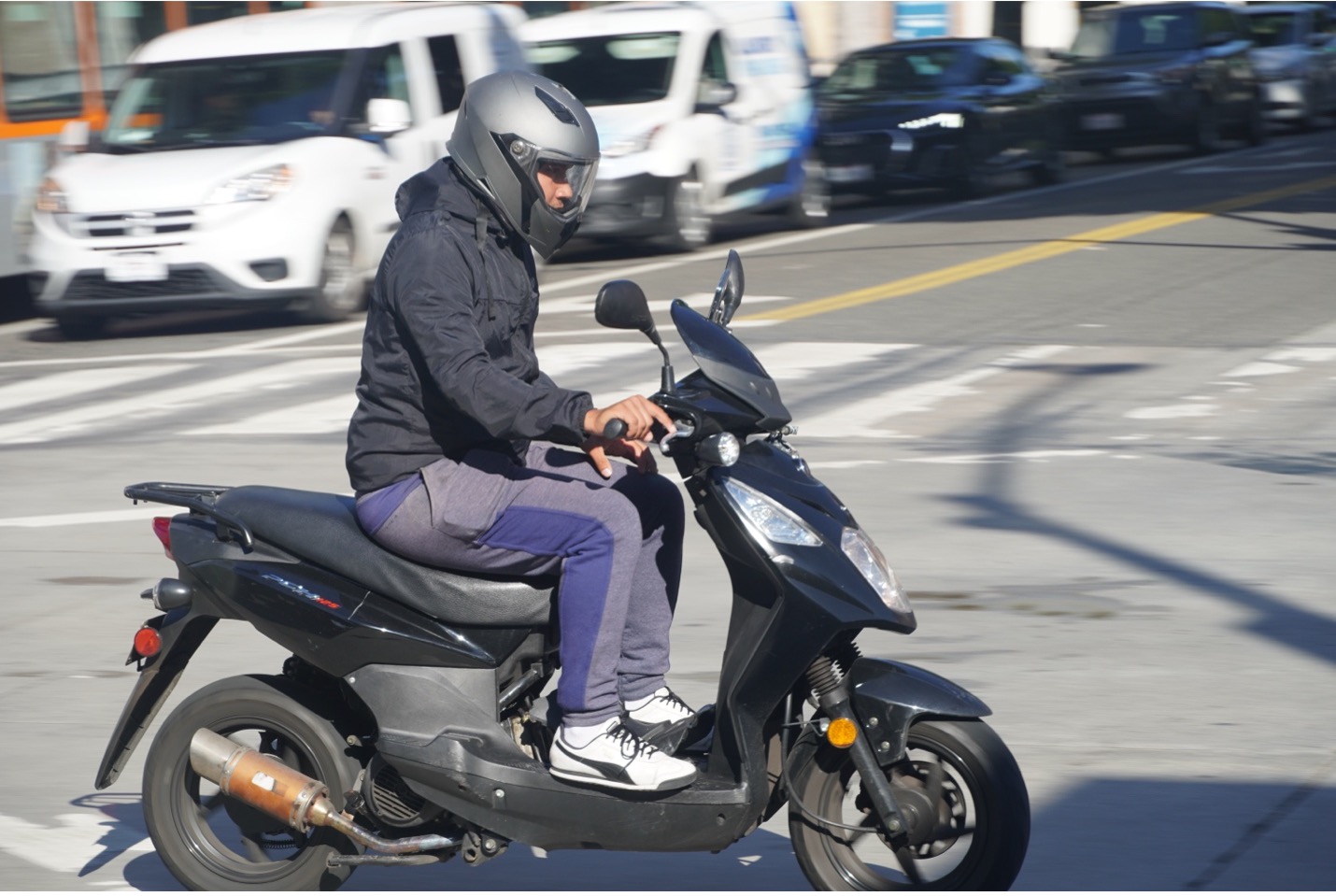
Convenient Around Town
If you live within ten miles of work, a small 50cc scooter may be an ideal form of daily transportation. With a top speed of around forty miles per hour, it will get you everywhere you need to go as long as you stay off major highways.
Always check your local laws regarding scooters and motorcycles and make sure you’re in compliance.
You can add saddlebags or racks to carry groceries, and you can park a scooter just about anywhere. Again, check your local laws. If your commute requires highway travel, you’ll need a larger scooter. Some 250cc models can reach eighty-five miles per hour and easily keep up with interstate highway traffic.
According to Stephen Zompa of Moto Europa, the Vespa dealer in Saint Louis, “A big benefit of the newer scooters is the fact that storage compartments are plentiful. And with top cases and side cases totaling six cubic feet of storage, you could easily fit your full grocery list inside. And getting 100 miles per gallon isn’t bad either.”
Car Free Success Story:
I use my Vespa scooter every day and have put over 1,000 miles on it in the last three and a half months. I usually put gas in every ten days or so, but the tank only holds two and a half gallons. I don’t run it dry and I never spend more than ten dollars to fill it. Scooters are very Euro-chic and garner a lot of attention. Mine is red. I am not only visible, I am practically a traffic hazard because I cause rubber-necking.
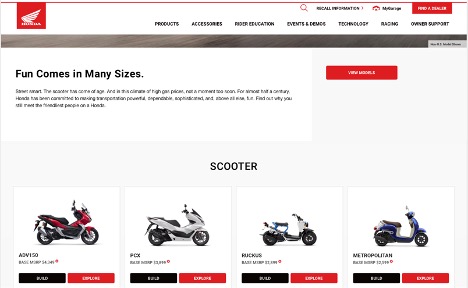
Affordable Transportation
You can buy a new Honda scooter starting at about $2,500. A new Italian-made Vespa will set you back around $3,000 for the entry-level model. Off-brand scooters made in China are available for under $1,000.
The cost to insure a scooter can be as low as $150 per year. As mentioned earlier, some models get more than one hundred miles per gallon. And there is usually no cost to park a scooter.
Since scooters cost less than motorcycles and get better gas mileage, they’re selling so fast many dealers can’t keep them in stock. A scooter industry market report predicts the North American scooter market will exceed $15 billion and three million units by 2029.
Laws regarding scooters vary. In many states, scooters with 50cc engines are considered mopeds. Thus they do not require any special licensing or even helmets.
Nevertheless, it’s important to keep in mind that any motorized vehicle can be dangerous and requires proper training and safety equipment to operate. All scooter buyers should sign up for a motorcycle training course, wear a helmet at all times, and obey the traffic laws. Check with your local Honda or Vespa dealer for more information.

E-Scooters and Electric Motorcycles
Electric scooters and motorcycles are more sustainable and reduce the pollution caused by gasoline powered bikes. There are pros and cons, however.
According to this article by Luxe Digital, “Electric motorcycles have many advantages. Ease of maintenance, instant torque, and whisper-quiet noise levels are some of the top benefits. But there are some disadvantages to electric motorbikes too. The main issues to consider are the limited range, charging time and infrastructure, and potential battery replacement needs.”
If you want to prioritize sustainability in your transportation choice, electric is the way to go. But which electric scooter or motorcycle should you buy? There are so many choices.
Here’s a good place to start; Luxe Digital published a list of their top picks for e-motorcycles in 2023. Check out the article here. And see the chart below.
You’ll notice that many of the best rated bikes are from brands you’ve never heard of. EV startups and newcomers abound. It’s an exciting time to be shopping for an electric motorcycle or scooter.
What about Those Little Scooters with Tiny Wheels?
Ah yes. I see those little scooters parked all over my neighborhood. You can rent them from scooter-share companies like Bird, Lime, Spin, Veo, and Wheels.
You can also buy and own small electric scooters. I’ve seen them for sale online for as little as $100, up to about $1,200. The median price point is around $300 to $500.
The great things about these small electric scooters is their convenience factor and their sustainability factor. By replacing short car trips these scooters have prevented thousands of tons of CO2 from being released into the atmosphere.

Whichever you choose – buying a scooter or using a scooter sharing company – you must be aware of the limitations and typical use case.
The small wheels and stand-while-riding ergonomics mean these scooters are generally not for commuting longer distances to work or school. Not to say you can’t do that, but it’s not really what they’re designed to do.
Personally, I would not ride these small-wheeled scooters more than a couple of miles. The size, battery power, and design of these scooters make them ideally suited for first-mile/last-mile use.
First-mile/last-mile is a term commonly used in the mass transit industry to mean getting to and from the bust stop or train station. In other words, the bus or train will take you 95% of the way to work, the remaining 5% is considered first-mile/last-mile.
The first-mile refers to getting to the transit stop, where you would then board the bus or train. The last mile refers to getting from the transit stop to your final destination. That’s where these scooters really shine.
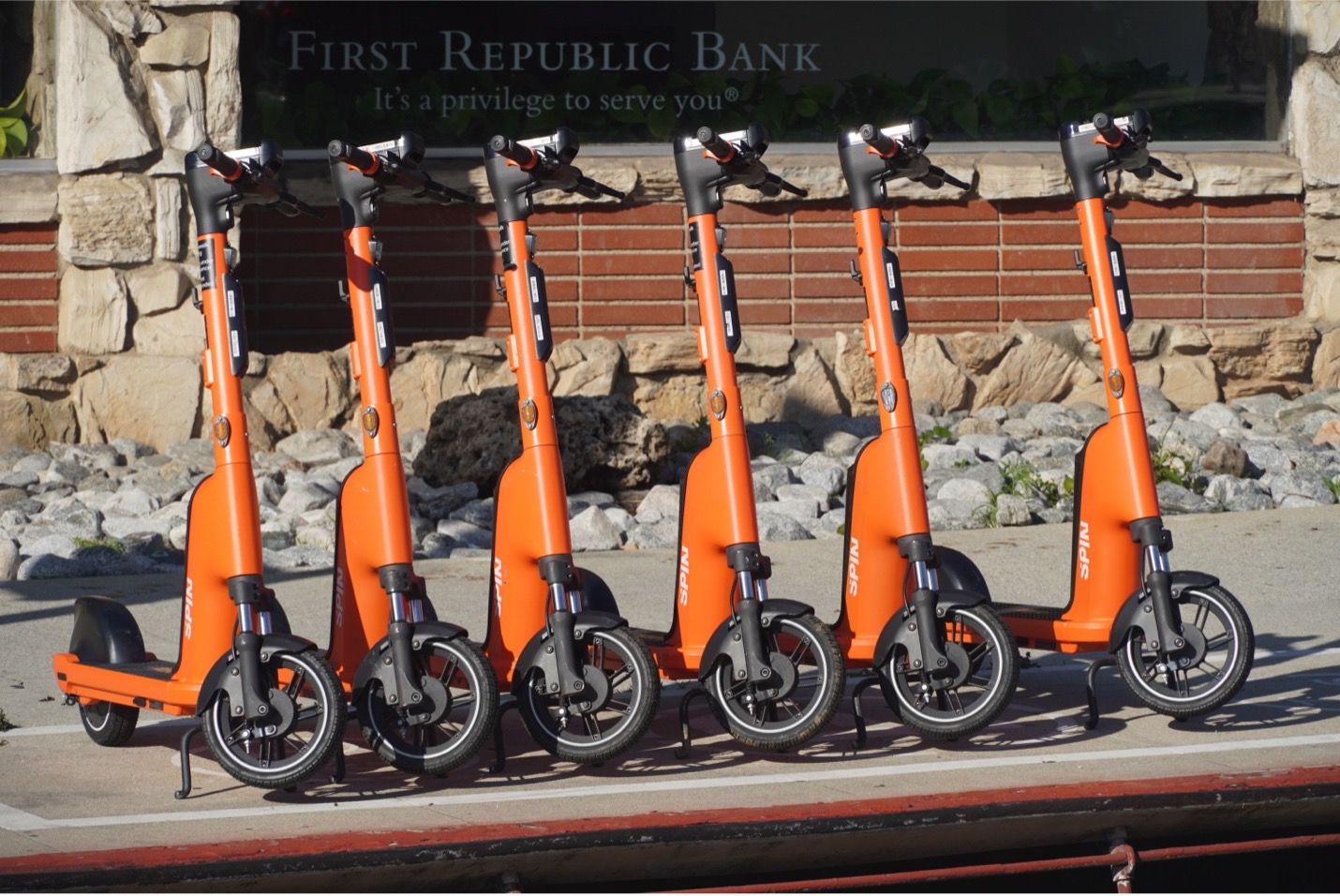
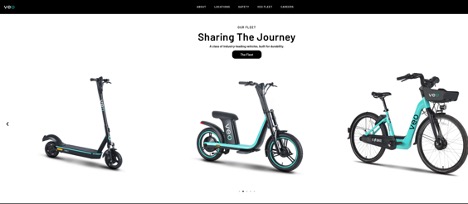
Scooter Sharing Companies
Bird, Lime, Spin, Veo, and Wheels are a few of the largest scooter sharing companies in the US. I must admit, when I first saw the Bird scooters parked around my neighborhood in Santa Monica I was skeptical. But after using these services I see how convenient they are.
Here’s how scooter sharing works. First, look around your neighborhood to see which scooter sharing company seems to have the most scooters parked in your neighborhood. Then download that company’s app onto your smartphone and set up an account with a credit card.
When you are ready to use a scooter, the app will display a map which shows where the nearest scooter is to your location. Walk to the scooter, scan the barcode, and off you go. The app will automatically bill the credit card you have on file. Once again, wear a helmet!
After you arrive at your destination, you just park the scooter safely and out of the way, and leave it there. Someone from the company will come by late night to either charge the scooter or swap out the battery. That’s none of your concern. You just use it, park it, and forget it. Super simple.
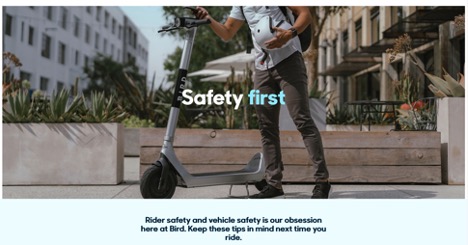
Buying a Small Electric Scooter
Before you purchase an electric scooter, I would suggest you try one of the scooter sharing companies first. I know several people who tried riding these small scooters and decided it wasn’t for them. Some people feel right at home standing on a scooter moving ten miles an hour down the road, other people not so much.
If you try it and like it, purchasing a scooter might be a good option. Just make sure you have a place to store it inside – small scooters are easy to steel – and a place to charge it. Most of them can be charged from a standard wall outlet.
Another factor is whether or not you should buy a folding scooter. My neighbor bought a foldable scooter from Amazon and she loves it.
She keeps it folded up behind her couch, charges it from a wall outlet, rides it to the metro stop, then folds it up again and takes it on the train with her. At work, she keeps it under her desk in her cubicle. She even recharges it at work. A perfect car free commute.
Car Free Success Story:
Most people think of motor scooters as relatively small and somewhat slow. If you are one of them you are in for a surprise. My Piaggio scooter has a top speed of seventy-five mph. Using the scooter to go to work, run errands, or drive through the park is a wonderful experience. Try it, you will love it.

